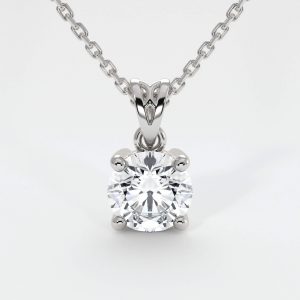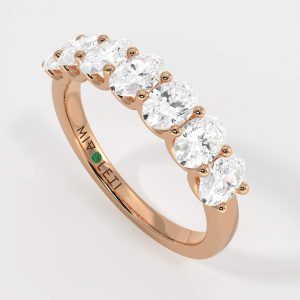Introduction to SEO for Diamond Jewelry E-Commerce
Search Engine Optimization (SEO) plays a pivotal role in ensuring diamond jewelry e-commerce websites achieve higher visibility on search engines. With consumers relying heavily on online searches to discover luxury items, implementing effective SEO strategies is critical for driving organic traffic and increasing conversions. SEO helps businesses target relevant audiences, improve their website’s usability, and stay competitive in a crowded market.
Key focus areas include:
Keyword Research – Understanding what potential customers search for. On-Page SEO – Optimizing content, metadata, and URLs for search engines. Technical SEO – Enhancing site speed, mobile usability, and security.
Adopting these practices positions diamond jewelry businesses for sustainable online growth.
Understanding Your Target Audience and Keyword Research
Identifying the target audience is a foundational step for selling diamond jewelry online effectively. Businesses must analyze demographics, preferences, and purchasing behaviors to craft tailored marketing strategies. Research tools like Google Analytics and customer surveys provide insights into high-value audience segments.
Keyword research is equally critical, as it determines terms potential customers use while searching. Tools such as Google Keyword Planner, SEMrush, or Ahrefs help identify high-traffic, low-competition keywords related to diamond jewelry. Long-tail keywords, such as “affordable diamond engagement rings” or “custom diamond necklace designs,” often attract specific buyers. Integrating these into product descriptions and content ensures relevance and improves SEO performance.
Optimizing Product Descriptions for Higher Rankings
Crafting compelling, keyword-rich product descriptions improves visibility and customer engagement. Each description should highlight the unique features, benefits, and craftsmanship of the diamond jewelry while incorporating relevant long-tail keywords naturally. Avoid duplicate content by tailoring descriptions for each product to stand out.
Key strategies include:
Highlight Specific Details: Mention carat weight, cut, clarity, and color, as these build trust and address common buyer queries. Use Engaging Language: Appeal to emotion by emphasizing the elegance and timeless value of diamonds. Incorporate Buyer Intent Keywords: Focus on phrases like “buy diamond earrings online” or “custom engagement rings.”
Store owners should regularly audit and refine descriptions to align with evolving search behaviors.
Leveraging High-Quality Visual Content for Engagement
High-quality visual content plays a pivotal role in engaging online shoppers, especially in the luxury jewelry market. Detailed images allow customers to examine diamonds’ cut, clarity, and brilliance closely. Utilizing multiple angles, 360-degree videos, and zoom functionalities enhances transparency, fostering trust. Effective use of lighting and background minimizes distractions, highlighting the jewelry’s appeal.
Incorporating visuals into social media strategies amplifies visibility. Sharing styled photography or user-generated content encourages sharing, boosting organic reach. Adding optimized alt tags and captions to images improves SEO performance. Platforms like Instagram or Pinterest, heavily reliant on visuals, are ideal for showcasing collections, driving traffic, and captivating potential buyers.
Building Backlinks and Strengthening Domain Authority
Securing high-quality backlinks is pivotal for enhancing a website’s domain authority, particularly in competitive industries like diamond jewelry. Partnering with reputable jewelry blogs, online publications, or influencers creates opportunities for link placements that boost credibility. Guest blogging on authoritative platforms allows for creating valuable content while earning backlinks. Participating in niche forums and contributing meaningful discussions can also lead to organic link generation. Employing smart internal linking strategies distributes link equity across webpages, promoting stronger rankings. Regularly monitoring backlinks using SEO tools is essential to ensure link quality and prevent harmful links from damaging domain authority over time.
Utilizing Local SEO for Targeted Geographic Reach
Targeting potential customers within specific geographic areas is key to increasing sales of diamond jewelry online. Businesses should strategically optimize their content for local search queries. This involves adding location-specific keywords to product descriptions, meta tags, and blogs to align with search intent in that area.
To improve visibility, companies can claim and optimize their Google Business Profile by adding accurate store details, reviews, and photos. Ensuring listings on local directories enhances reputation and discoverability. Structured data markup can further boost ranking by offering precise location information. Leveraging localized content establishes trust with regional audiences.
The Role of Mobile Optimization in Boosting Sales
Mobile optimization plays a critical role in enhancing user experience, especially for customers browsing diamond jewelry online. With the growing prevalence of mobile shopping, responsive design ensures an attractive and functional website across varied screen sizes. Loading speed impacts customer retention; therefore, optimizing page speed is vital to reduce bounce rates. Mobile users expect seamless navigation, from category browsing to checkout, so simplified menus and intuitive interfaces drive higher engagement. Leveraging mobile-friendly visuals, such as high-resolution jewelry images optimized for smaller screens, ensures products are displayed compellingly. Incorporating mobile-specific features like click-to-call boosts sales by facilitating direct communication.
Enhancing Website Speed and User Experience
Page load speed significantly impacts both search engine rankings and user satisfaction. Search engines prioritize fast-loading websites, especially on mobile devices, which are frequently used to shop online. To enhance website speed, diamond jewelry businesses should implement image compression for high-resolution product photos, leverage browser caching, and utilize Content Delivery Networks (CDNs). Optimized website themes with clean code further streamline performance.
User experience (UX) equally matters. A responsive design ensures seamless navigation across all devices, while intuitive interfaces make product discovery easier. Adopting secure and fast payment gateways also improves trust and convenience. Each step taken enhances not only user retention but also search engine visibility.
Monitoring SEO Performance Metrics and Analytics
Tracking SEO performance is vital for optimizing online diamond jewelry sales. Utilizing tools such as Google Analytics and Google Search Console enables detailed insights into user behavior and site performance. Key metrics to monitor include:
Organic Traffic: Monitor the volume of traffic sourced from search engines over time. Bounce Rate: Identify exit points where users leave without interaction. Conversion Rate: Measure how effectively traffic translates into completed purchases. Keyword Rankings: Examine keyword placement in search engine results. Click-Through Rate (CTR): Track how frequently your pages are clicked when shown in results. Backlink Quality: Assess referring domains to ensure they remain authoritative and relevant.
Regular analysis ensures data-driven decisions to boost visibility and sales.
Conclusion: Achieving Long-Term Success in Online Jewelry Sales
Achieving sustained success in selling diamond jewelry online requires consistent application of SEO strategies tailored to the nuances of the jewelry market. By optimizing for relevant keywords, enhancing user experience, and leveraging high-quality imagery, businesses can build credibility and authority.
Monitoring search trends and adapting to algorithm updates is crucial for maintaining visibility. Additionally, fostering customer trust through secure transactions and showcasing customer reviews can enhance brand loyalty. Developing a mobile-friendly site ensures accessibility, while implementing local SEO benefits location-based searches. Such efforts establish a foundation for long-term growth in an increasingly competitive online landscape.














